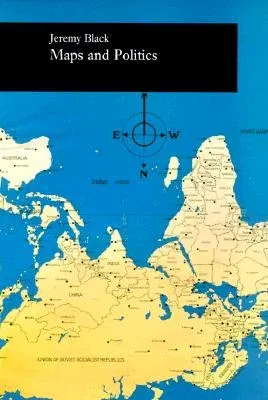Do maps accurately and objectively present the information we expect
them to portray, or are they instead colored by the political purposes
of their makers? In the lively and well-illustrated Maps and Politics,
Jeremy Black investigates this dangerous territory, arguing persuasively
that the supposed "objectivity" of the map-making and map-using process
cannot be divorced from aspects of the politics of representation. Black
uses a wide variety of historical and contemporary examples to show that
maps have played, and continue to play, a major role in international
and domestic politics. From an Australian atlas that gives Australia
pride of place in the center of the globe to U.S. maps from World War II
that minimize the distances between the United States and Europe,
globalizing American attention, to current wildly divergent
representations of the former Yugoslavia used by various groups to
assert ethnic identities and territorial claims, maps both reflect and
advance political agendas in powerful ways. Among the many topics Black
considers are how to recognize the underlying messages shown by various
projections in world maps or historical atlases; how cartographers deal
with political and socioeconomic issues in maps; and the problems of
mapping frontiers, especially those that are in dispute. In all these
areas, Black shows that the major cartographic developments over the
past century have been responses both to scientific advances and to a
greater emphasis on graphic imagery in societies affected by
politicization, democratization, and consumer and cultural shifts.

